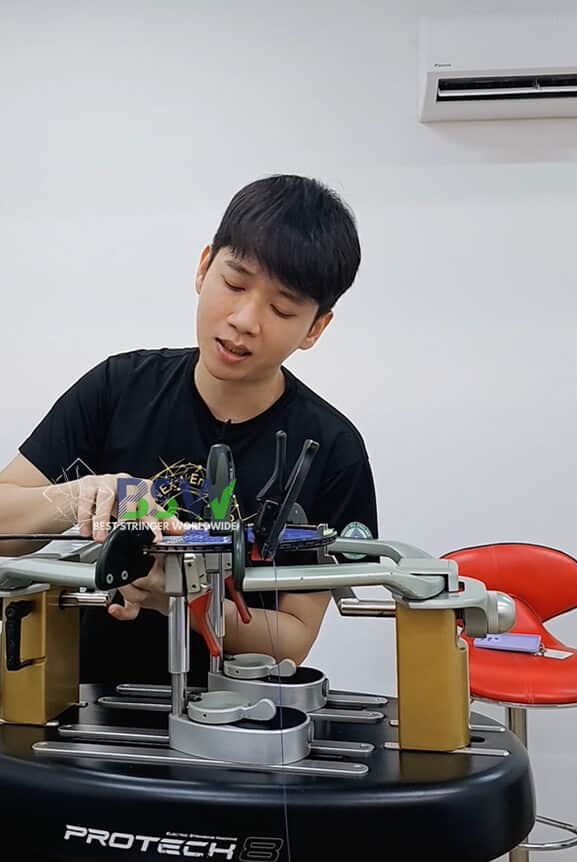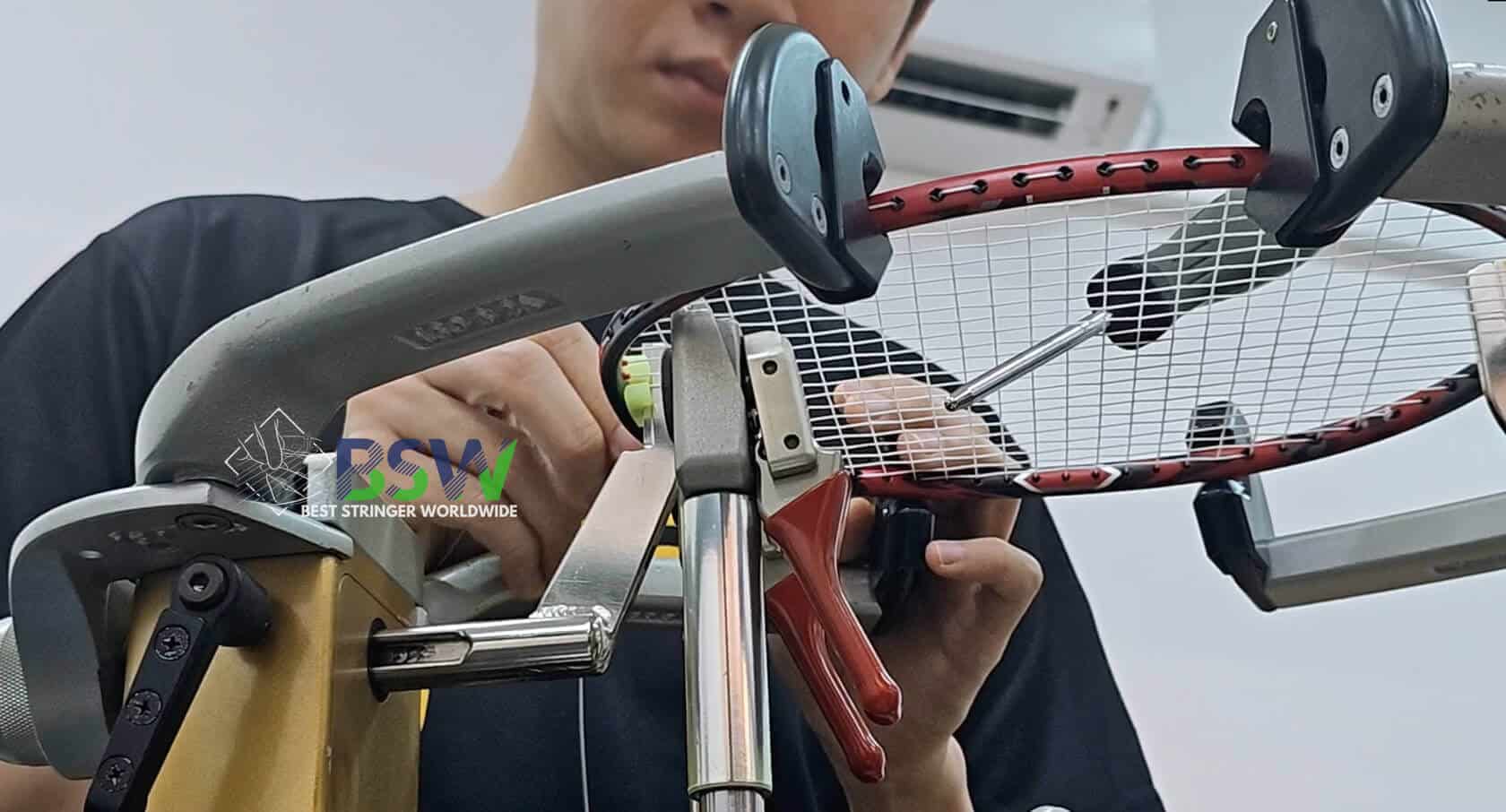In the ever-evolving world of tennis equipment, string technology plays a crucial role in a player’s performance and overall experience on the court. With thousands of string options available in today’s market, choosing the right string can be more challenging than ever. This comprehensive guide will delve into the intricacies of tennis string structures and textures, providing you with the knowledge to make informed decisions about your equipment.
At Best Stringer Worldwide (BSW), we’ve created this content to help both stringers and players improve their understanding of tennis strings. Whether you’re a professional stringer looking to enhance your expertise or a player aiming to optimize your racquet setup, this guide will provide valuable insights into the world of tennis strings.
String Life Calculator
Introduction to Tennis String Structures
The structure of a tennis string significantly influences its performance characteristics, including durability, power, control, and feel. Understanding these structures can help you choose the right string for your playing style or recommend the best options to your clients. Let’s explore the main types of string structures and their unique properties.
Monofilament Structure
Monofilament strings are the simplest in terms of structure, consisting of a single, solid fiber throughout the entire length of the string. In modern tennis, monofilament strings are primarily made from polyester materials.

Characteristics of Monofilament Strings:
- Durability: Excellent resistance to wear and tear
- Control: High level of control due to reduced string movement
- Spin potential: Good spin generation, especially with textured versions
- Comfort: Generally less comfortable than multifilament strings
- Tension maintenance: Better tension maintenance compared to multifilament strings
Examples of monofilament strings include Babolat RPM Blast, Luxilon ALU Power, and Solinco Hyper-G.
Solid Core with Single Wrap Structure
This popular synthetic string structure features a solid core wrapped with a single layer of fibers or filaments. The solid core provides durability and tension maintenance, while the outer wrap adds protection and can enhance playability.
Characteristics of Solid Core with Single Wrap Strings:
- Durability: Good overall durability
- Tension maintenance: Better than multifilament strings
- Feel: Improved feel compared to pure monofilament strings
- Versatility: Suitable for a wide range of playing styles
Examples include Babolat Xcel, Wilson NXT, and Head Velocity MLT.
Solid Core with Multi-Wrap Structure
Building upon the single wrap structure, these strings feature multiple layers of wrapping around the solid core. This construction allows for finer tuning of string properties and is particularly well-suited for wide-beam racquets.
Characteristics of Solid Core with Multi-Wrap Strings:
- Comfort: Enhanced comfort compared to single wrap strings
- Performance: Excellent performance on wide-beam racquets
- Customization: Allows for more precise fine-tuning of string properties
- Durability: Good durability with added protection for the core
Examples of this structure include Tecnifibre X-One Biphase, Prince Premier Touch, and Gamma Live Wire Professional.
Multifilament Structure
Multifilament strings are designed to mimic the structure of natural gut strings, consisting of numerous thin fibers bundled together without a solid core. This structure is often used in synthetic gut strings to replicate the feel and performance of natural gut.
Characteristics of Multifilament Strings:
- Comfort: Excellent shock absorption and arm-friendly properties
- Power: High power potential due to greater elasticity
- Feel: Enhanced feel and touch
- Tension loss: Faster tension loss compared to solid core strings
- Durability: Generally less durable than solid core or monofilament strings
Examples include Tecnifibre X-One Biphase, Wilson NXT, and Babolat Xcel.
Multifilament with Single Wrap Structure
This structure combines the benefits of multifilament strings with an additional outer wrap. The multifilament core provides the primary performance and feel characteristics, while the outer wrap enhances durability and reduces string movement.
Characteristics of Multifilament with Single Wrap Strings:
- Comfort: Good comfort levels from the multifilament core
- Durability: Improved durability compared to unwrapped multifilament strings
- Performance: Balanced performance suitable for a wide range of players
- Tension maintenance: Better tension maintenance than unwrapped multifilament strings
Examples include Head Reflex MLT, Gamma TNT2 Touch, and Prince Premier Touch.
Multifilament with Multi-Wrap Structure
As micro-technology advances allow for even finer fibers, some strings feature multiple layers of wrapping around a multifilament core. This structure further enhances durability while maintaining the beneficial properties of multifilament strings.
Characteristics of Multifilament with Multi-Wrap Strings:
- Durability: Excellent durability for a multifilament-based string
- Feel: Maintains good feel and comfort from the multifilament core
- Versatility: Suitable for a wide range of playing styles and skill levels
- Tension maintenance: Improved tension maintenance compared to standard multifilament strings
Examples include Tecnifibre NRG2, Yonex Poly Tour Pro, and Babolat Origin.
Hybrid Structure
Hybrid strings combine different materials or constructions within a single string set, typically using one type for the main strings and another for the cross strings. This approach allows players to blend the characteristics of different string types for a customized performance profile.
Characteristics of Hybrid Strings:
- Customization: Allows players to fine-tune their string bed for specific performance characteristics
- Durability: Can improve overall durability by using a more durable string in high-wear areas
- Performance: Combines benefits of different string types (e.g., durability of polyester with comfort of multifilament)
- Complexity: Requires more knowledge to select and install effectively
Examples of hybrid combinations include polyester mains with multifilament crosses, or natural gut mains with polyester crosses.
| Structure | Durability | Comfort | Spin Potential | Tension Maintenance |
|---|---|---|---|---|
| Monofilament | Excellent | Low | Good | Excellent |
| Solid Core with Single Wrap | Good | Moderate | Moderate | Good |
| Solid Core with Multi-Wrap | Good | Good | Moderate | Good |
| Multifilament | Moderate | Excellent | Moderate | Moderate |
| Textured/Shaped | Good | Varies | Excellent | Good |
| Hybrid | Good | Good | Good | Good |
Tennis String Textures
While all strings have some degree of texture, some are specifically designed with enhanced surface textures to influence performance characteristics, particularly spin generation.
Textured Strings
Textured strings feature deliberate modifications to their surface to increase friction between the string and the ball. This can be achieved through various methods:
- Wrapping thin filaments around the string’s exterior
- Embedding rough materials into the outer layer
- Using one or two thicker filaments in the outer wrap
The increased surface roughness of these strings aims to enhance spin potential by providing more grip on the ball at impact.
Examples of textured strings include Babolat RPM Blast Rough, Solinco Tour Bite Soft, and Luxilon Alu Power Rough.
Geometric Shape Structures
Some strings are manufactured with unique cross-sectional shapes, moving beyond the traditional round profile. These shapes can include:
- Flat (rectangular)
- Square
- Oval
- Pentagonal
- Octagonal
- Gear-like
The theory behind these shapes is that they can increase the string’s bite on the ball, potentially enhancing spin generation and control. While scientific consensus on the effectiveness of these shapes is still developing, many players who favor spin-heavy playing styles report noticeable differences.
Examples of strings with unique geometric shapes include Volkl Cyclone, Solinco Hyper-G, and Yonex Poly Tour Spin.
Choosing the Right String Structure and Texture
Selecting the appropriate string structure and texture depends on various factors, including:
- Playing style (e.g., baseline player, serve-and-volley, all-court)
- Skill level
- Physical characteristics (e.g., strength, proneness to arm injuries)
- Personal preferences for feel and performance
- Frequency of play and budget considerations
Here are some general guidelines to help you choose:
- Power players: Might prefer stiffer strings like monofilaments or solid core structures for enhanced control and durability.
- Touch players: Often favor multifilament or natural gut strings for enhanced feel and comfort.
- Spin-focused players: May benefit from textured strings or those with unique geometric shapes.
- Players with arm issues: Should consider softer strings like multifilaments or natural gut for improved comfort and shock absorption.
- Frequent string breakers: Might opt for more durable options like monofilaments or hybrid setups.
Remember, the best way to find your ideal string is through experimentation. Consider trying different string structures and textures to see which combination complements your game best.
The Importance of Professional Stringing
While understanding string structures and textures is crucial, proper installation is equally important. A professional stringer with proper training and certification can ensure that your chosen strings are installed correctly, maximizing their performance and longevity.
If you’re interested in deepening your knowledge of tennis stringing, consider enrolling in a comprehensive tennis racquet stringing course. These courses cover not only string properties but also proper installation techniques, tension considerations, and racquet customization.
For those looking to turn their passion for tennis into a career, pursuing a tennis stringing certification can open up new opportunities in the industry. Programs like the BSW tennis racquet stringing certification provide in-depth training on all aspects of racquet stringing and customization.
Conclusion
Understanding tennis string structures and textures is a valuable skill for both players and stringers. It allows for more informed decisions when selecting strings and can significantly impact on-court performance. As string technology continues to evolve, staying updated on the latest developments can give you an edge in your game or stringing business.
At Best Stringer Worldwide (BSW), we’re committed to advancing the knowledge and skills of tennis enthusiasts and professionals alike. By understanding the nuances of different string structures and textures, you can optimize your equipment or provide better service to your clients, ultimately elevating the game of tennis.
Test Your Knowledge
Now that you’ve learned about tennis string structures and textures, let’s test your knowledge with a quick quiz:
Tennis String Structures Quiz
Whether you're a player looking to optimize your racquet or a stringer aiming to provide the best service to your clients, understanding tennis string structures and textures is crucial. Continue exploring and experimenting with different strings to find the perfect combination for your game or your customers' needs.
Remember, the journey to becoming an expert in tennis racquet stringing is ongoing. Consider enrolling in a comprehensive tennis racquet stringing course or pursuing a tennis stringing certification to further enhance your skills and knowledge in this fascinating aspect of the sport.

About Best Stringer Worldwide
Best Stringer Worldwide is a comprehensive badminton and tennis stringing education program. We provide in-depth training on stringing techniques, racquet technology, and player-specific customization. Our curriculum is designed to help stringers understand and meet the needs of all badminton players, from casual enthusiasts to competitive athletes.
Read More